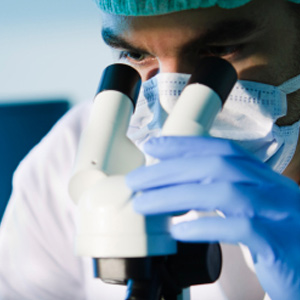
Immunotherapy has only worked for a small number of patients, and only in certain cancers, including melanoma and leukaemia, but experts believe its promise is huge.
"Oncologists, a grounded-in-reality bunch, say a corner has been turned and we won't be going back," said the journal Science.
Research began in the late 1980s when French scientists discovered a receptor on T-cells, called CTLA-4, a molecule that turned out to play an important role in regulating the immune system.
A decade later, a Texas researcher showed that blocking CTLA-4 in mice "could unleash T-cells against tumour cells in the animals, shrinking them dramatically," the journal said.
More advances have followed. In the 1990s, a biologist in Japan discovered a molecule expressed in dying T-cells, called PD-1, which has also shown promise in the fight against cancer.
A new drug
As many as five big pharmaceutical companies are now on board with immunotherapy. A new drug made by Bristol Myers-Squibb was approved in 2011. Called ipilimumab, it costs $120 000 per treatment course.
It's costly, and by no means a sure bet. Research in 2012 on a group of 300 people showed the drug shrunk tumours by half or more in 31% of patients with melanoma, 29% with kidney cancer and 17% with lung cancer.
Research out this year on 1 800 people with melanoma who received ipilimumab, 22% were alive three years later.
Receptor therapy
A related treatment called chimeric antigen receptor therapy, which involves modifying a patient's own T-cells to make them attack tumours, has succeeded in putting 45 of 75 people with leukaemia in total remission, researchers said this year.
One of those success stories is Emily Whitehead, now age eight. Last year she became the first paediatric patient to receive the experimental therapy for acute lymphoblastic leukaemia (ALL).
"She is doing great. She is almost 20 months cancer free now. Her health has just been wonderful. She is completely back to normal, back to school full time," her mother, Kari, told AFP.
Emily was at the brink of death, and after two relapses doctors admitted they had no options. Their hope was suddenly revived when her family learned about the experimental T-cell therapy and agreed to try it.
"There just wasn't anything left for her," her mother said. "This treatment has just been amazing for Emily and for all the other families who were told the same thing."
Top 10 breakthroughs
The journal Science and its publisher, the American Association for the Advancement of Science, pointed to other key achievements in its annual top 10 breakthroughs issue.
They included:
- A new generation of cheaper solar cells called Perovskite cells, which are gaining efficiency and are cheaper than traditional silicon cells.
- Progress in growing lab versions of miniature human organs such as brains, kidneys and liver buds to better understand human disease.
- Stem cells derived from cloned human embryos.
- A better understanding of how sleep allows the brain to clean itself by expanding channels between neurons and allowing more cerebrospinal fluid to flow through.
- The importance of microbes in the understanding of the body's overall health.
- A new way of designing a vaccine using the structure of an antibody, cheered for its potential against a common childhood illness, respiratory syncytial virus.
- The origin of cosmic rays was figured out after 100 years. It turns out they come from debris clouds left by supernovae, or exploding stars.
Top scientists of 2013
The journal Nature also released its list of the top scientists of 2013.
They included Russian meteorite hunter Viktor Grokhovsky, whose 30 years of expertise helped advance the study of a massive Chelyabinsk meteor that took astronomers by surprise when it crashed to Earth in February.
Another was Chinese virologist Hualan Chen, who helped quell an outbreak of H7N9 bird flu in humans by rushing to collect samples, leading to the closure of risky poultry markets. She also published controversial research on engineered H1N1 and H5N1 flu hybrids that could pass between mammals.




 Publications
Publications
 Partners
Partners











